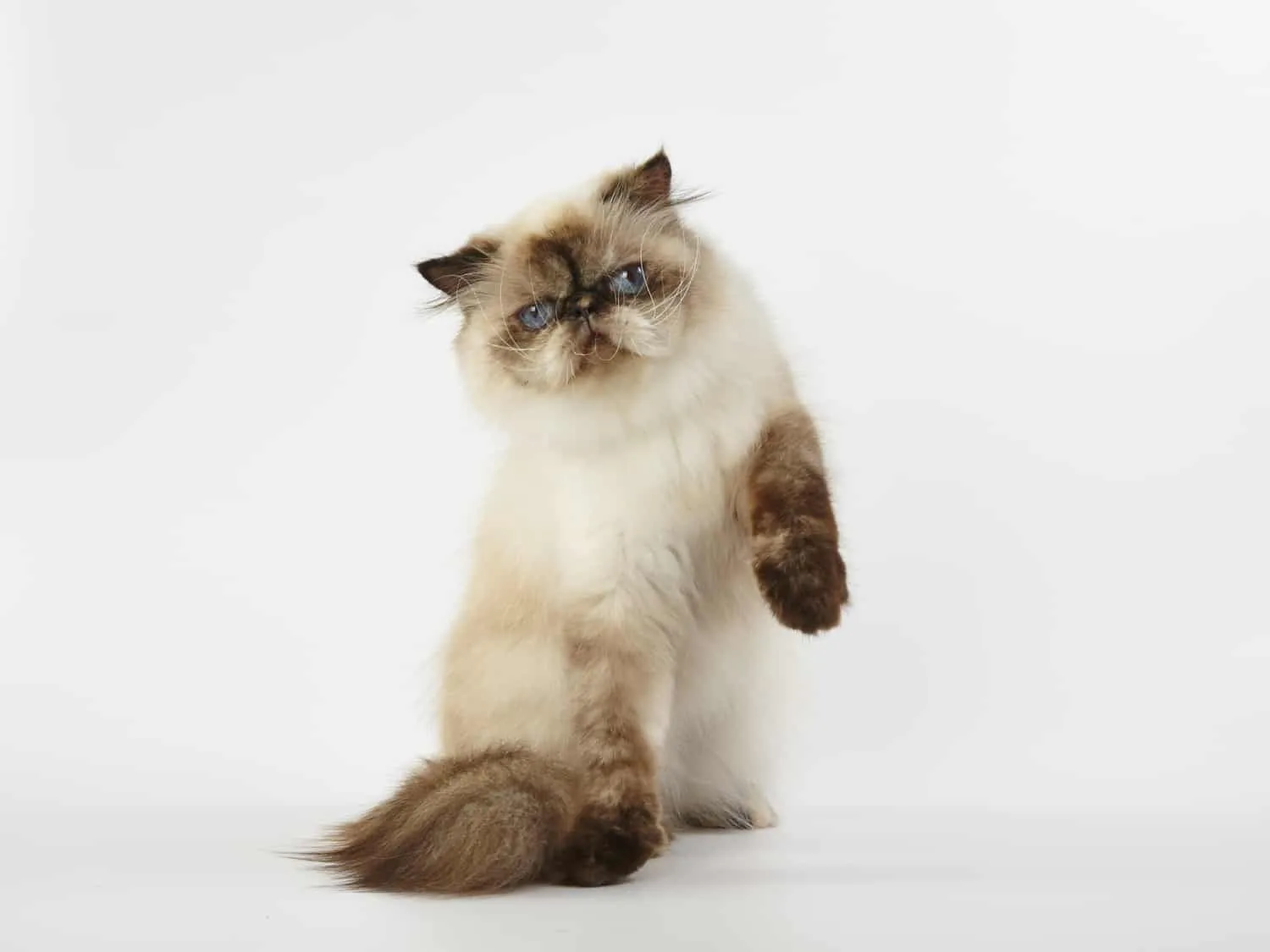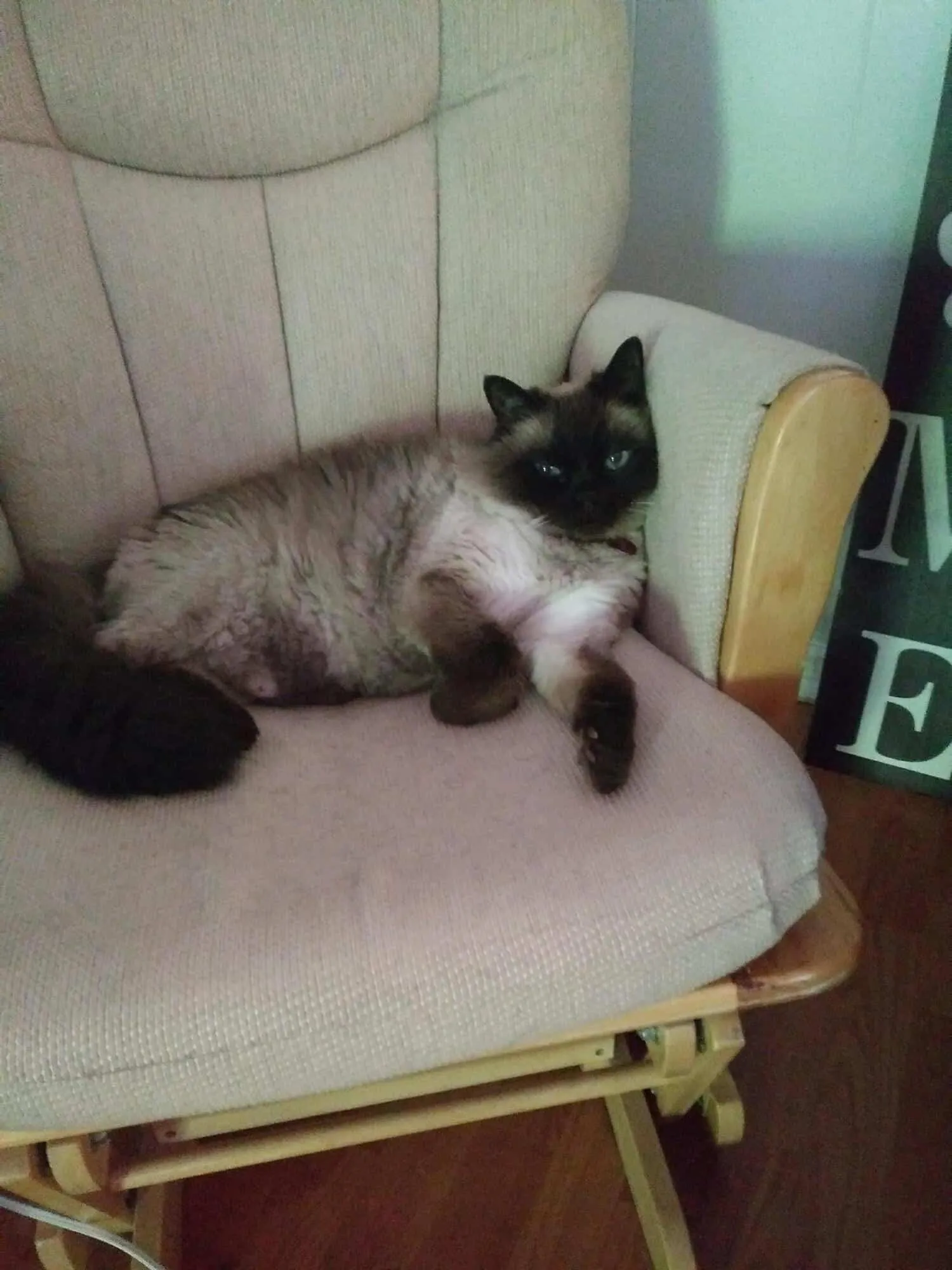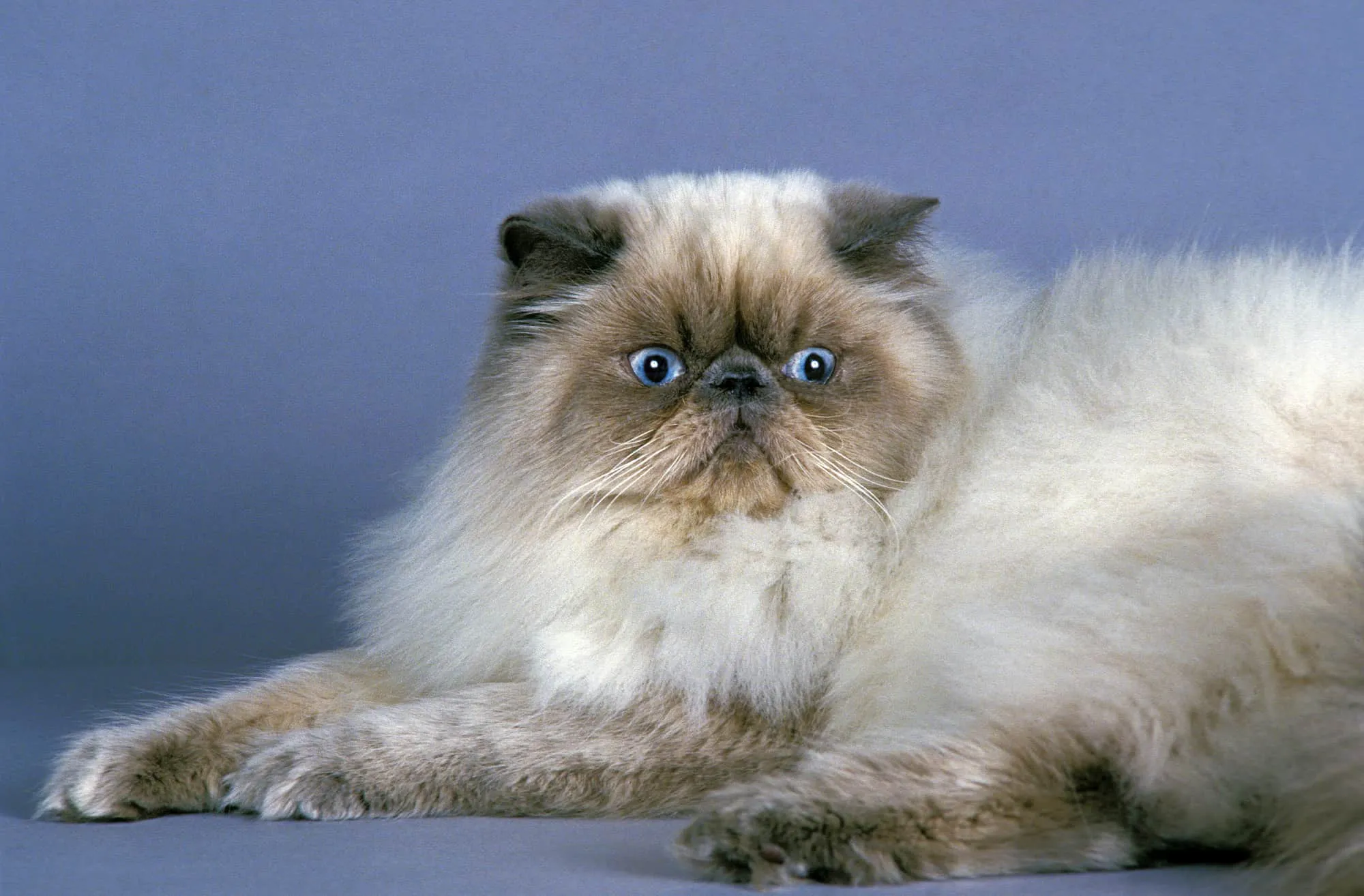Ragdoll cats vs. Himalayan cats often sparks curiosity among cat enthusiasts, especially those seeking affectionate, laid-back companions. Both breeds are renowned for their striking blue eyes, colorpoint patterns, and gentle natures, making them top choices for families and first-time owners. If you’re comparing these popular longhaired breeds to decide which fits your lifestyle, this guide breaks down their similarities, differences, and care needs based on official standards and real-world experiences.
These colorpointed beauties share roots in selective breeding for beauty and temperament, but subtle distinctions in size, coat, and personality set them apart. For a broader look at all kinds of cats, explore various breeds to find your perfect match.
 Avro, an 11-year-old seal point Himalayan cat lying tummy up on a wood floor
Avro, an 11-year-old seal point Himalayan cat lying tummy up on a wood floor
Cat Fanciers’ Association (CFA) Recognition
The Cat Fanciers’ Association (CFA), the world’s largest registry for pedigreed cats, provides authoritative breed standards. Recognizing 45 breeds, CFA ensures purity through detailed criteria on appearance, temperament, and genetics.
Ragdoll CFA Standards
CFA classifies Ragdolls as a unique longhaired breed originating in the 1960s from breeder Ann Baker. They’re large, point-colored cats with a docile, affectionate demeanor. Patterns include mitted, bicolor, van, and colorpoint. Official details are available on the CFA Ragdoll page.
Himalayan CFA Standards
Himalayans are a Persian variant, crossed with Siamese for colorpoint traits. They’re longhaired with stocky builds, round heads, broad faces, short noses, and vivid blue eyes—disqualification occurs without blue eyes. See full standards on the CFA Persian/Himalayan page.
Quick Comparison Table: Ragdoll vs. Himalayan
| Feature | Ragdoll | Himalayan |
|---|---|---|
| Coat | Medium-long, silky, no undercoat | Long, dense double coat |
| Size | Large (12-20 lbs) | Medium-large (7-12 lbs) |
| Eye Color | Blue | Blue (vivid required) |
| Colors | Seal, blue, chocolate, lilac, red, cream (plus lynx/tortie) | Seal, blue, chocolate, lilac, red, cream (plus tortie/lynx) |
| Lifespan | 9-15 years | 8-11 years |
| Temperament | Social, loving, dog-like | Gentle, quiet, reserved |
Ragdolls feature triangular faces and oval eyes, while Himalayans have round faces and eyes. Ragdolls are bigger overall, with longer lifespans on average.
 Himalayan domestic white and brown cat with its paw up in the air
Himalayan domestic white and brown cat with its paw up in the air
Coat Appearance and Grooming Needs
Coat texture is a standout difference in Ragdoll cats vs. Himalayan cats. Ragdolls boast medium-long, plush fur resembling rabbit silk—thick yet soft, with a prominent neck mane that fluffs with age. Lacking an undercoat, they shed minimally, easing allergy concerns (though not truly hypoallergenic) and reducing matting risks. Brush 2-3 times weekly with a wide-tooth comb for optimal health.
Himalayans’ long, bushy double coats create an illusion of greater size, feeling dense and downy. Their undercoat demands daily brushing to prevent mats, especially around the ruff and britches. They shed seasonally more than Ragdolls, requiring consistent grooming routines. Use detangling sprays and professional clips if needed, per veterinary recommendations.
Both benefit from high-quality diets supporting coat shine, like those rich in omega fatty acids.
 Avro, an 11-year-old seal point Himalayan lying on a cream-colored glider rocker chair
Avro, an 11-year-old seal point Himalayan lying on a cream-colored glider rocker chair
Physical Appearance and Build
Ragdolls rank among the largest domestic breeds, with males often 12-20 lbs on sturdy frames, broad chests, proportionate long legs, and tapered tails. Their semi-foreign body type supports agility despite size.
Himalayans are medium-to-large cobby cats (7-12 lbs), heavy-boned with short bodies and legs. Their Persian-influenced structure emphasizes a compact, luxurious look. Head shape clinches identification: Ragdolls’ wedge-like faces vs. Himalayans’ extreme brachycephalic rounds.
Colors and Patterns
Both offer seal, blue, chocolate, lilac, red, and cream points, plus lynx, tortie, and torbie variants. Ragdolls add distinct patterns: colorpoint (traditional Siamese-style), mitted (white paws/mittens), bicolor (white inverted V on face, legs/belly), and van (white body with colored tail/head). Himalayans mirror Persian solids in points, including bi-color and parti-color options.
Temperament and Social Behavior
Ragdoll cats vs. Himalayan cats shine in sociability, but nuances emerge. Ragdolls are “dog-like”—goofy, cuddly lap cats craving human interaction, vocalizing with trills over meows. They befriend dogs, kids, and strangers effortlessly but dislike solitude; pair them for happiness.
Himalayans are serene couch potatoes, purring quietly for laps and play. Less vocal than some, they meow for needs and adapt to calm homes. Both thrive with toys, leashes for walks, and companions, but Ragdolls demand more attention.
 Himalayan white and brown cat sitting on a white background
Himalayan white and brown cat sitting on a white background
From experience, my Ragdoll Rags melted into “ragdoll” limpness when picked up, while Himalayan owners report regal poise. Early socialization boosts adaptability.
Health and Lifespan Considerations
Himalayans average 8-11 years, prone to brachycephalic issues: breathing difficulties, tear staining, entropion, and polycystic kidney disease (PKD). Screen parents via genetic tests.
Ragdolls live 9-15 years, robust overall but watch for hypertrophic cardiomyopathy (HCM), urinary issues, and obesity from sedentary habits. Annual vet checks, balanced nutrition, and exercise prevent problems. Reputable breeders test for HCM/PKD, per CFA guidelines.
 Himalayan cat with blue eyes laying against a blue backdrop
Himalayan cat with blue eyes laying against a blue backdrop
Frequently Asked Questions
How Can You Tell If Your Cat Is a Himalayan?
Without papers, DNA testing (e.g., Wisdom Panel) confirms breed. Check CFA traits: round face, blue eyes, long coat, point colors. Consult a vet or breeder.
Are Ragdolls Considered Himalayans?
No—Ragdolls are distinct; Himalayans are Persian variants. Key diffs: size, face shape, coat density.
Which Is Easier to Groom?
Ragdolls, due to no undercoat and less shedding/matting.
Conclusion
Ragdoll cats vs. Himalayan cats offer loving companionship with shared blue-eyed allure and calm vibes, yet differ in size, grooming, and subtle traits. Choose Ragdolls for larger, silkier goofballs or Himalayans for plush, quiet elegance. Prioritize ethical breeders, routine care, and vet advice for thriving pets. Ready to welcome one home? Share your breed thoughts below!
References
- Cat Fanciers’ Association: Ragdoll Breed Standard
- Cat Fanciers’ Association: Persian/Himalayan Standard
- Veterinary insights from AKC and breed clubs on health screening.
